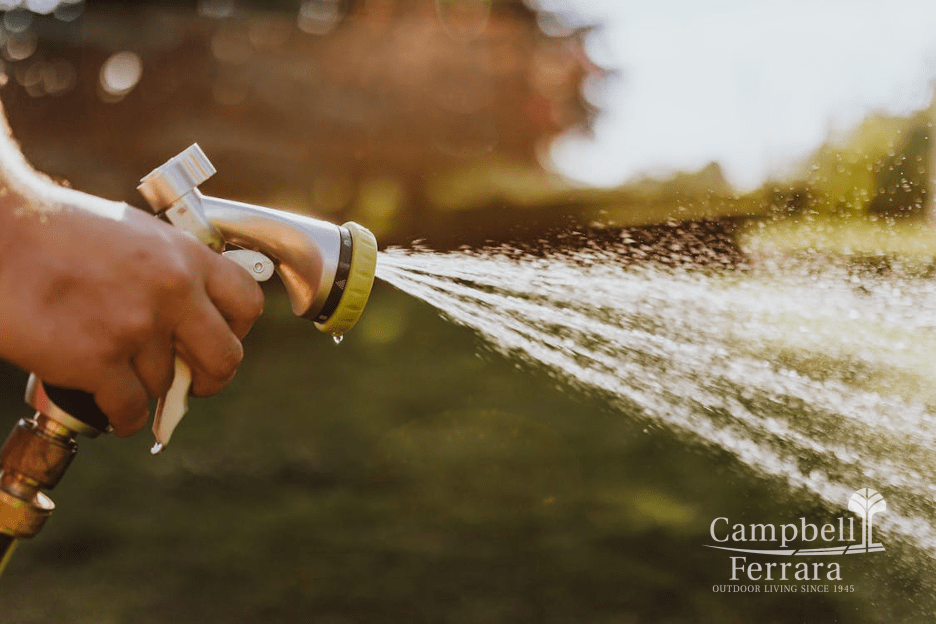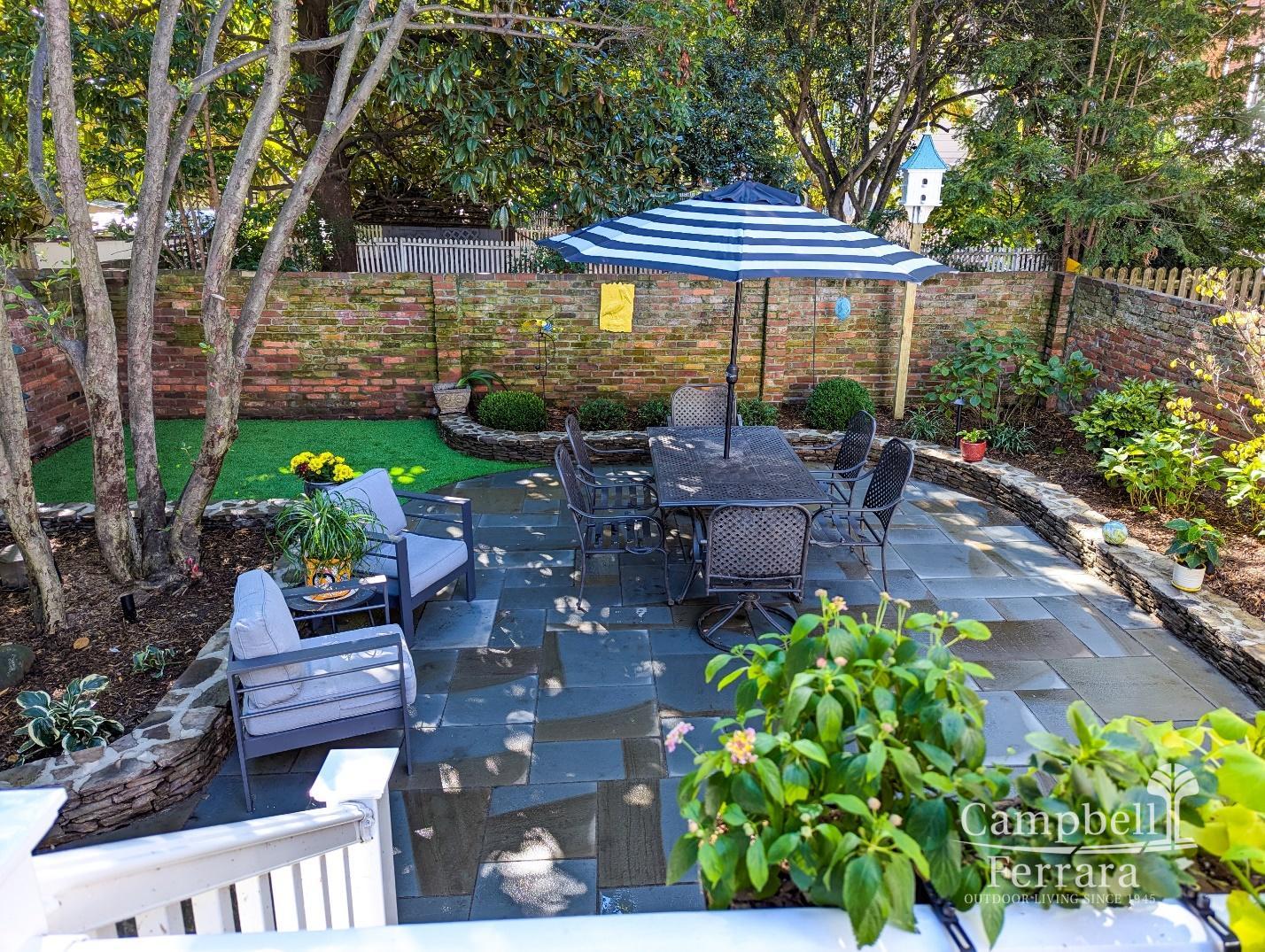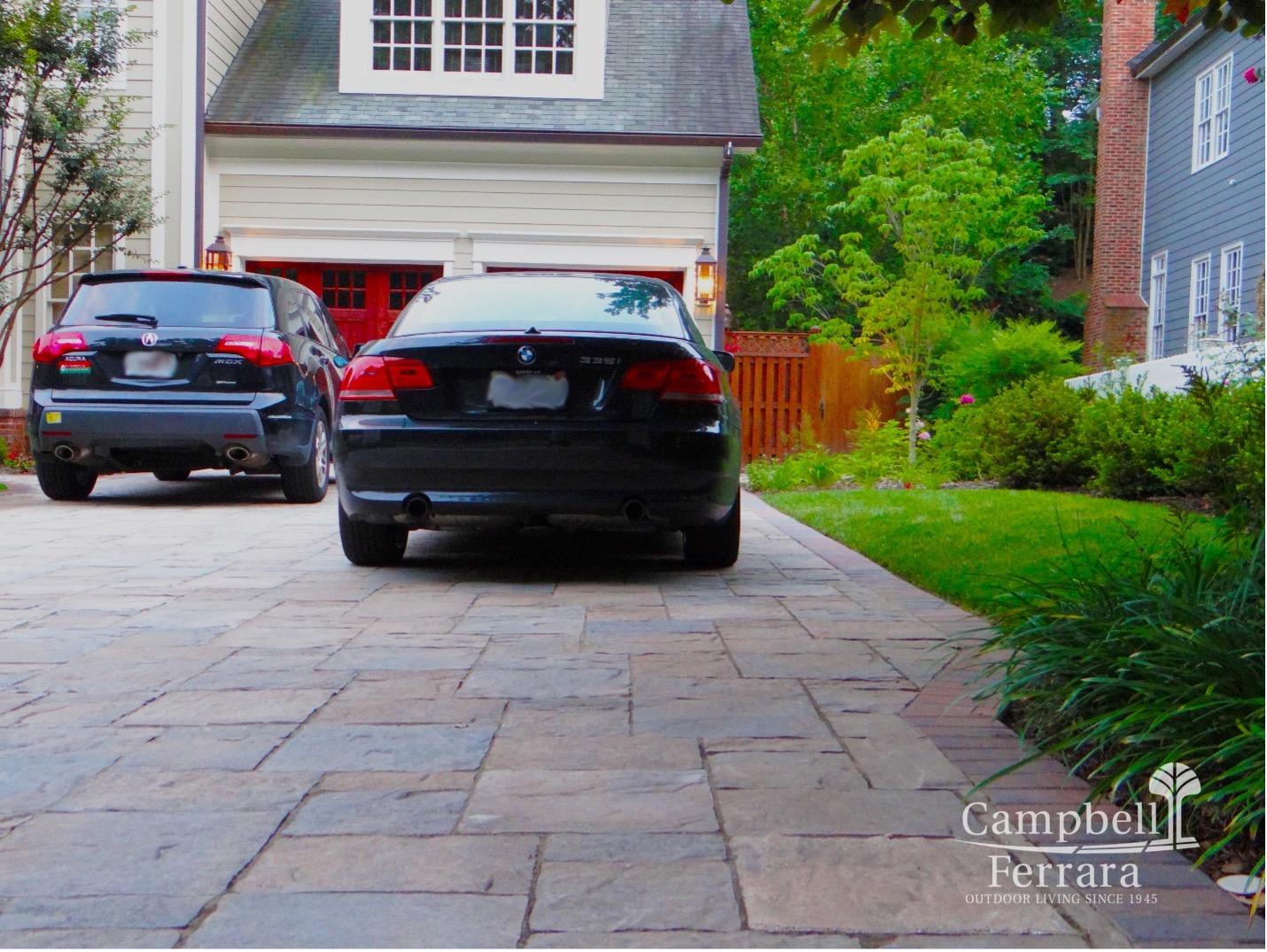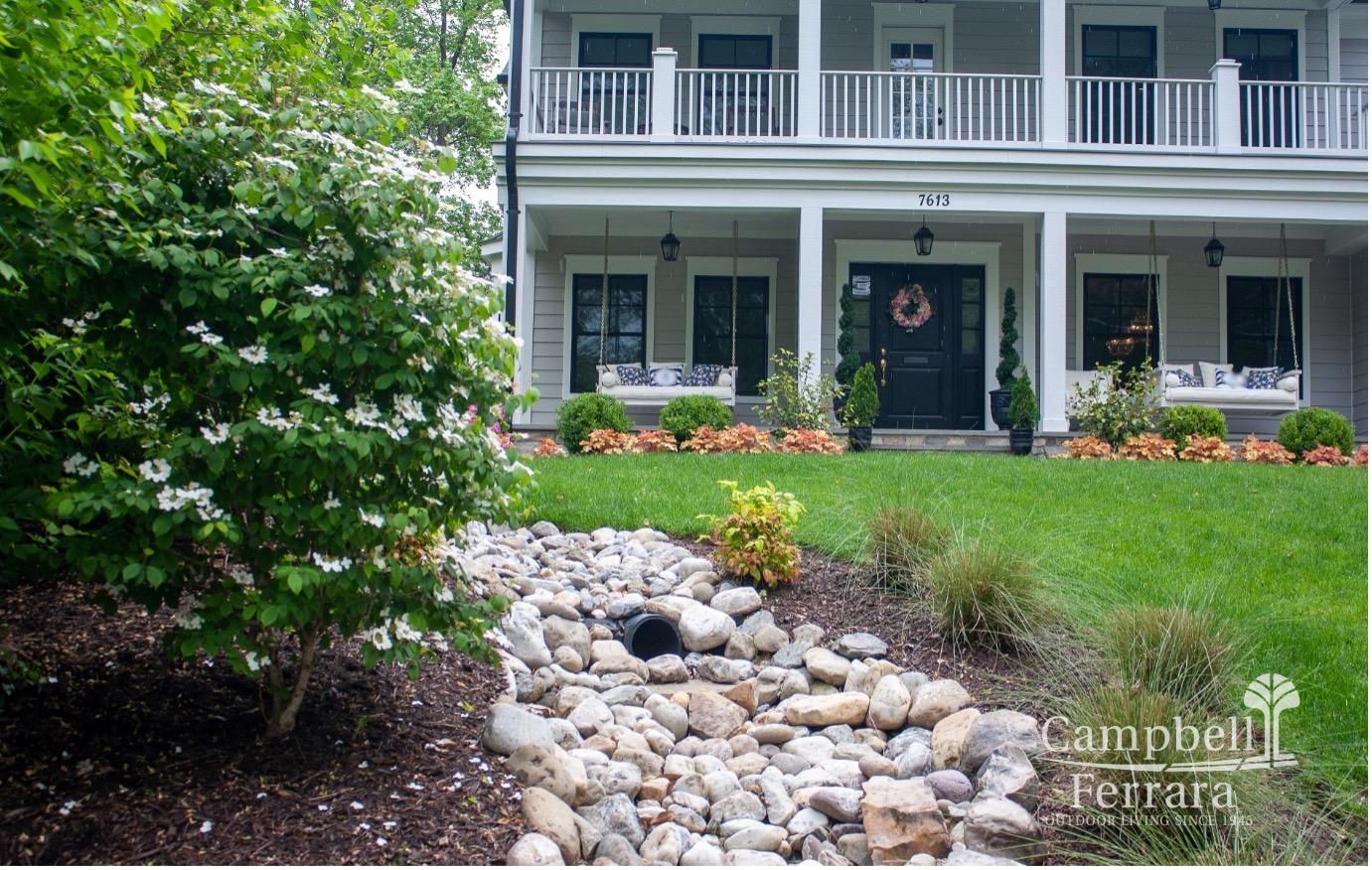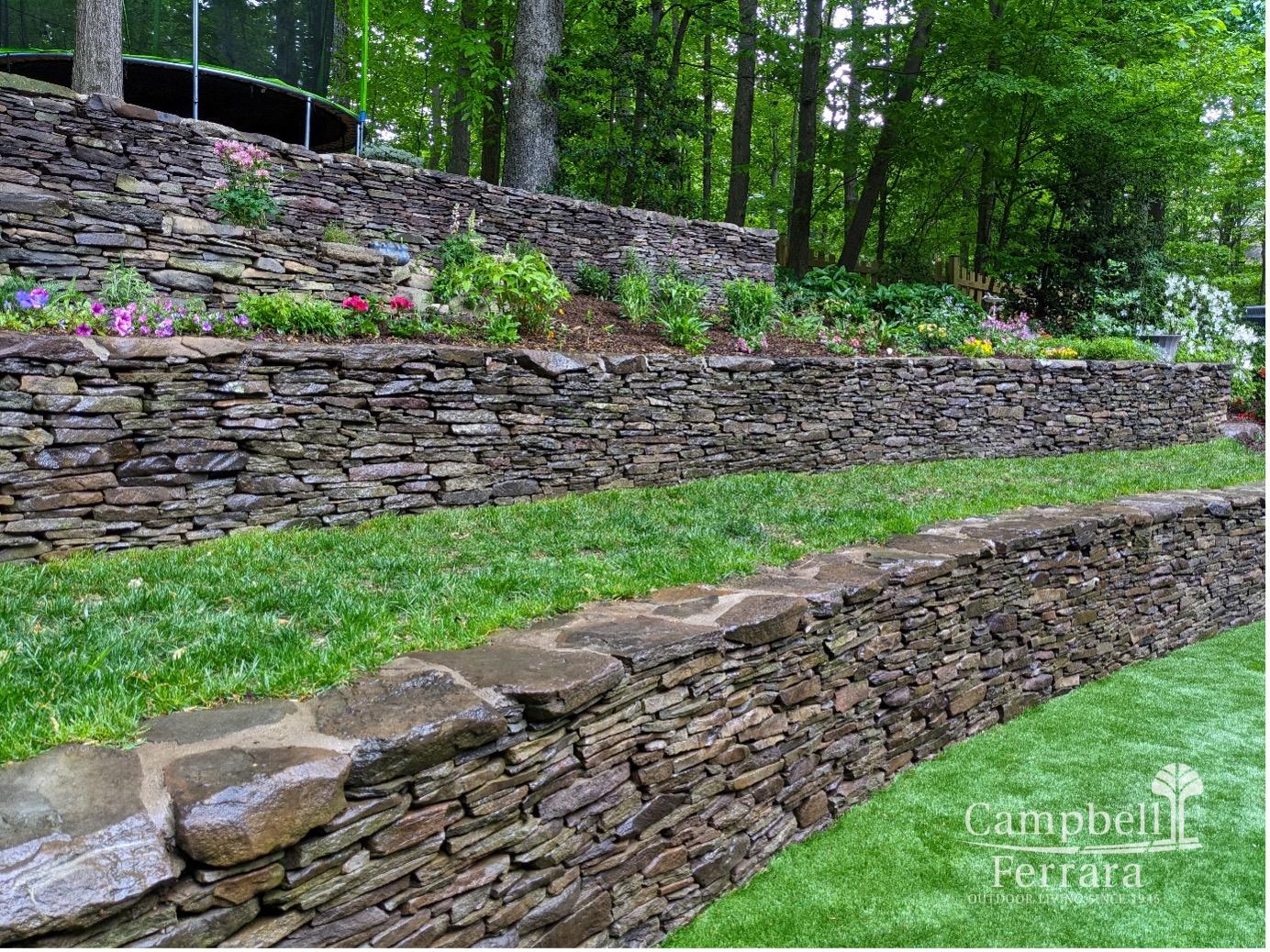
Your winter landscape doesn’t need to look bleak. Instead, you can incorporate trees and shrubs with attractive bark, evergreens, and other woody contrast against the winter landscape.
Your patio contractors probably built your patio so you can look at it from inside your home. If you plant trees and shrubs with berries near your patio, you’ll also have many birds visiting your backyard, which you can watch from your warm home.
Planting Design Considerations + 10 Trees & Shrubs for Winter Interest
If you want to add more winter color and attract birds to your backyard, then you want to add evergreens and woody plants with showy bark, berries, and evergreen leaves.
But first, you must consider what will grow in Alexandria, VA. We’re in zone 7, so there are many trees and shrubs to consider for winter interest. Here are four characteristics to keep in mind when adding trees and shrubs to your backyard landscape:
- Attracts birds with the plant’s berries
- Look for woody plants that have sturdy branches to hold snow and ice
- Plant trees and shrubs with interesting bark
- Plant shrubs and trees with evergreen foliage.
Fortunately, in zone 7, many cultivars provide one to two of the above features to grace your landscaping this winter.
American holly – This majestic tree looks striking in winter. It produces bright red berries that the birds love, and you can cut branches for a winter holiday display. It stays a dark green throughout the year.
- Balsam fir – This evergreen tree has dark green foliage, evergreen spicy aroma, dense branches, smooth grey bark, and produces upright pinecones that look like candles. It grows one foot per year, typically grows 46-66 ft. tall and can grow up to 89 ft. at maturity, making them an excellent privacy tree.
Learn more: Now Is the Time to Invest in Hardscaping
Crape myrtle – A staple in southern landscapes, crape myrtles provide winter appeal with peeling bark that shows a copper-red color underneath. Mature crape myrtles shed their bark, so you don’t need to worry that yours has a disease.
- Inkberry holly – This is a broadleaf shrub that isn’t thorny. It produces black berries that stand out well with their green leaves. You’ll find birds visiting this shrub throughout the winter.
- Red osier dogwood – The bark of this multi-stemmed tree turns bright red in the winter, an amazing accent. The green foliage turns to orange/red then purple before defoliating to show off the amazing red bark. The summer white flowers are followed by white berries that last into the winter, a treat the songbirds love. It has four season appeal, prefers to be planted in moist to wet soil, serves as an excellent option to use on a slope for erosion control or as a hedge growing 6 – 9 ft. at maturity.
- Dura-heat birch – The stunning creamy white peeling bark, nice form and branching are showy in the winter, brightening the drabness of a winter landscape. The diamond shaped green leaves turn a butter yellow in the fall. It is the most heat resistant birch, is a vigorous grower reaching heights of 30 – 40 ft. and is a good choice for moist areas.
- Mountain laurel – While mountain laurel has beautiful springtime flowers, this broadleaf evergreen also provides a punch of layered green to your winter landscape. Mountain laurel looks spectacular in a wooded landscape.
Read more: Five Reasons to Hire a Hardscaping Expert
- Southern magnolia tree – Another southern staple, southern magnolia trees are evergreen and won’t lose their glossy leaves during winter. You can plant southern magnolias near your backyard patio to provide shade in the summer and green color throughout the winter.
- Southern bayberry – The southern bayberry can be grown as a shrub and is a broadleaf evergreen. It produces bluish-gray berries that stand out in a winter landscape while attracting a wide variety of birds to your backyard.
- Winterberry – If you want a shrub that provides winter-long interest and does well as a winter plant, you need winterberry to cheer up a drab landscape.
Plan on buying male and female winterberries to ensure pollination. The bright red berries on the shrub are poisonous to people, dogs, and cats. However, the birds love the berries that keep them fed during the winter.
 Plan Your Winter Planting with Campbell and Ferrara
Plan Your Winter Planting with Campbell and Ferrara
If the ground isn’t frozen, you can still plant trees and shrubs this winter. At Campbell and Ferrara, we specialize in planting trees and shrubs that provide winter color to your landscape.
Contact us at Campbell and Ferrara if you’re ready to plant any of these trees and shrubs mentioned above. Call us today at 703-705-7892 or fill out our contact form.
Campbell and Ferrara provides landscape design/build services and a retail garden center for homeowners living in Alexandria, Annandale, Arlington, Fairfax, Falls Church, Mount Vernon, and Springfield, Virginia.
Sources:
CarolinaNature.com, Southern Bayberry (Morella caroliniensis).
GardeningKnowHow.com, Balsam Fir Planting—Learn about Balsam Fir Tree Care.
Ibid, Is Bark Shredding from a Crepe Myrtle Tree Normal?
Ibid, Ornamental Bark on Trees: Choosing Trees with Showy Bark.
Ibid, Zone 7 Evergreen Trees—Choosing Evergreen Trees for Zone 7 Climates.
PlantNovaNatives.org, Native Evergreens and Semi-Evergreens.
TheSpruce.com, 10 Best Plants for Winter Landscapes.
Ibid, How to Grow and Care for Inkberry Holly.
Ibid, How to Grow and Care for Winterberry Holly.

 American holly – This majestic tree looks striking in winter. It produces bright red berries that the birds love, and you can cut branches for a winter holiday display. It stays a dark green throughout the year.
American holly – This majestic tree looks striking in winter. It produces bright red berries that the birds love, and you can cut branches for a winter holiday display. It stays a dark green throughout the year. Crape myrtle – A staple in southern landscapes, crape myrtles provide winter appeal with peeling bark that shows a copper-red color underneath. Mature crape myrtles shed their bark, so you don’t need to worry that yours has a disease.
Crape myrtle – A staple in southern landscapes, crape myrtles provide winter appeal with peeling bark that shows a copper-red color underneath. Mature crape myrtles shed their bark, so you don’t need to worry that yours has a disease. Plan Your Winter Planting with Campbell and Ferrara
Plan Your Winter Planting with Campbell and Ferrara